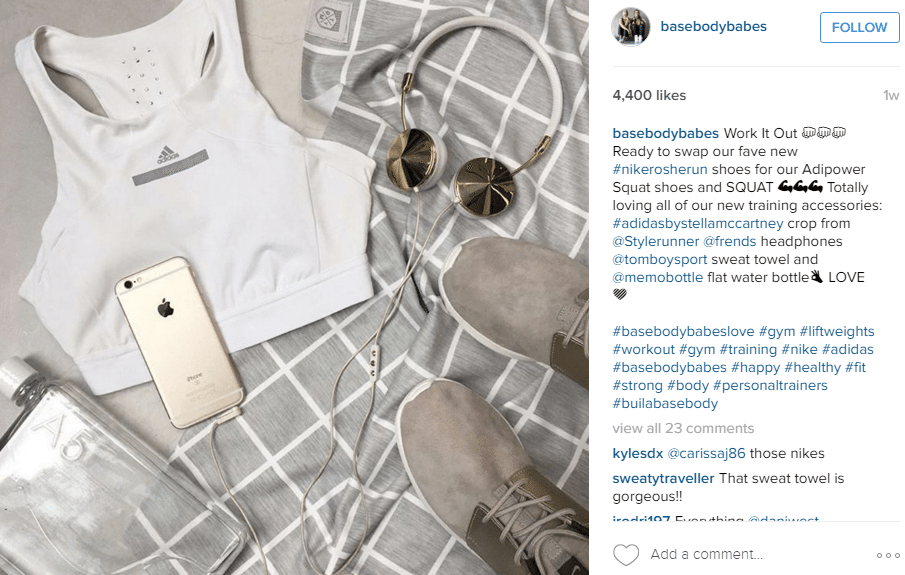
If you didn’t know, influencer marketing is a big deal today.
At least it has become so in the last couple of years.
And with all right.
Most of all for brands who are providing a physical product to their audience, but also for service businesses.
Let’s looks at some statistics that will help us understand why influencer marketing has gained such immense traction over the last couple of years:
- Influencer marketing content delivers 11X higher ROI than traditional forms of digital marketing.
- 74% of people turn to social networks for guidance on purchase decisions.
- 49% of people say they rely on recommendations from influencers when making purchase decisions.
The habits of the consumers are slowly changing, and for a large share of the consumer audience, the attention is transferring from Television and other forms of entertainment such as radio and has ended up on social media.
That attention transition is exactly what influencer marketing takes advantage of.
And when reading that “Millennials Watch Nearly 50% Less TV Than Adults 35+.” it doesn’t exactly leave us wondering why marketers are making that transition as well.
Because they want to be where the consumers are.
What is influencer marketing, exactly?
Influencer marketing is the use of industry-leading individuals with large audiences when marketing.
Brands let influential people spread their brand message, and because the influencer is trusted by its followers, the message will have more authority and trust. For companies, influencer marketing can be a central part of online reputation management.
This is Wikipedia’s definition of influencer marketing:
“Influencer marketing is a form of marketing in which focus is placed on specific key individuals rather than the target market as a whole. It identifies the individuals that have influence over potential buyers and orients marketing activities around these influencers.”
And that sums it up fairly well.
If brands can use trusted individuals to spread their message which ultimately leads to a higher ROI, why would they waste their money on trying to shout their message all on their own, using old-fashioned methods such as billboards and TV, where little attention is, and very little impact is being generated?
The answer is quite simple.
A study by Nielsen found that 92 percent of people trust recommendations from individuals (even if they don’t know them) over brands.
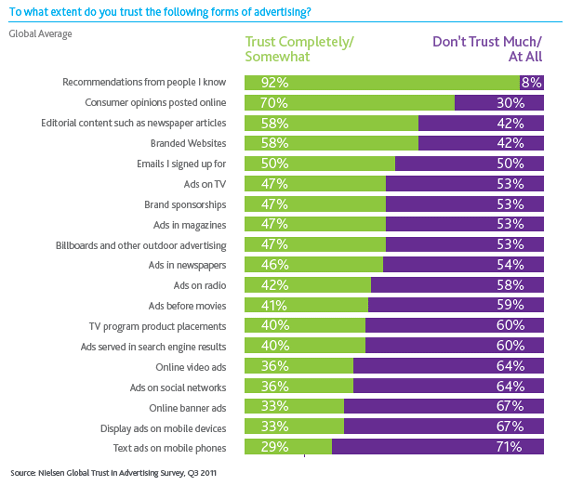
The contrast between brands who are implementing influencer marketing and those who still stick with display advertising is getting clearer, and one conclusion you can make when looking into this case closer is that the large corporates with huge marketing budgets are the ones who are still using display advertising most actively.
These brands are often slow and clumsy when it comes to implementing new trends and methods in their marketing strategies.
On the other hand, when it comes to the brands who are using influencer marketing, the trend is, as you might have guessed, the opposite.
These brands are mostly small and mid-size brands who are agile and quick-adapters who realize the true potential of it quickly.
However, this does not mean that no large corporates are using influencer marketing. And thankfully, more large corporates are slowly implementing influencer marketing into their strategies, even if it takes time.
An example of a large corporation that has implemented influencer marketing in their marketing strategy is Nike.
Because Nike has a modern audience, where a lot of them are using social media, it is important for them to use influencer marketing in order to reach their audience. And that is exactly what they have done – successfully.
Key components influencer marketing
Influencer marketing is an art, and if you jump into it without any planning, it can be difficult to use.
Therefore, it is important that you are aware of the key components that are required for a successful influencer marketing campaign.
Knowing/implementing these will help you generate a higher ROI and make your experience with influencer marketing that much better.
- Know your objectives.
- Plan your campaign.
- Identify and select influencers.
- The structure of the campaign.
- Confirm the post.
- Analyzing results.
- What will you do once the campaign is over?
Because all of these need further explaining, we’ll break down each and every one of them, so you can get a better understanding of how you can generate the best possible results with your campaign.
1. Know your objectives of influencer marketing
Before you begin, you need to know what your goals with influencer marketing are.
This will help you evaluate whether or not the campaign was successful, further on.
Objectives for influencer marketing you can use:
- Do you want to increase sales?
- Do you want to increase brand awareness?
- Do you want to reach a certain group and build relations with them?
- Do you want to increase newsletter sign-ups?
- Do you want to increase contest entries?
- Do you want to spread the word about a new product – and ultimately drive sales in the long run?
All of these goals can be achieved with influencer marketing, and deciding on one (or a few) can also help you know how to structure your campaign.
Because obviously, different goals have different marketing setups.
For example, these two ads have different agendas. Which one do you think has the goal of driving direct sales, and who do you think want to increase brand awareness which ultimately will lead to a sale?
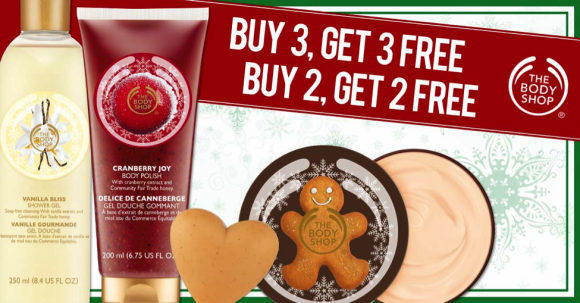
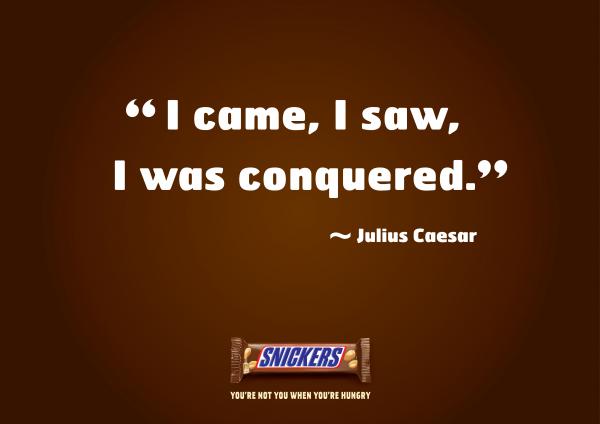
Something as simple as if you should include calls to action or not can make a huge difference in the results you’ll generate.
And once again, if you should include it or not depends on your goals.
Also, my apologies if I just made you hungry…
2. Plan your campaign
Here’s where it gets more practical.
When you know your objectives, you need to start planning on how you’re going to set up your campaign.
Do you want to try to make something unique and viral? Or do you want the influencer to share an image/photo of themselves using it?
An influencer marketing campaign can look differently.
If you want to generate direct sales, you, of course, want to have some kind of call to action. Think about an appealing such that still speaks the same language as the influencer.
A common mistake is that the brand writes the caption of the post for the influencer – and this is a big no-no.
What happens then is that the followers of the influencer will be able to tell that the caption hasn’t been written by the influencer, leading to the audience seeing right through the ad while also losing trust in the influencer.
A decreased credibility of the influencer is nothing that you want to be the reason to.
The end result of that will be a campaign that won’t generate as great results as it could have generated.
Therefore, I advise you to do the following:
Let the influencer know what your objectives with the partnership are, and what you want to include in the post/caption.
Based on that, the influencer can write an appealing message that their followers will read, and trust.
3. Identify and select the influencer
This is where it gets tricky.
In fact, a whopping 75% of marketers consider identifying suitable influencers to partner up with as the single biggest challenge of influencer marketing.
Many influencer marketing softwares like Dovetale, Humanz, and Grin offer businesses various filters to choose from and use when searching for the right influencers. However, that’s all nothing if the business doesn’t know what they are looking for or need.
Thankfully though, we have some solutions to that.
When choosing influencers to partner with, there are a number of things you have to look at and think about.
Because which influencer you choose to work with plays a big part in the results you’ll generate, it is incredibly important that you put a lot of effort into it.
Here are the most important things you have to think about when choosing influencers:
1. Which niche is the influencer in?
It’s important that you work with influencers who are in the same niche as you. If you do, their following will consist almost solely of people who also are your target audience, which means that you’ll have the highest chances of generating a high ROI. And of course, you only want to target those who are potential customers of your brand. Everything else is money wasted.
2. What is the engagement of the influencer like?
The engagement of the influencer will also play an important role in the results generated by the campaign.
An easy way to measure engagement is to divide their average likes with their followers. The result will be a percentage that measures their engagement.
While this isn’t exactly the most accurate way of measuring engagement, it will give a slight understanding of what their engagement is like. Take a look at some of the influencer’s top posts (i.e., those which earned high social shares) to get an idea of their overall engagement.
An acceptable like/follow rate is between 1%-5%, and everything above that is really good. Of course, all platforms are different so you should take it with a pinch of salt.
Also, having other engagement activities such as social shares is also important.
Knowing the engagement of the influencer will give you a better understanding of what results you can expect from the campaign.
There’s more…
When looking at the engagement, you don’t only want to look at likes and shares.
You also want to understand whether the influencer interacts with their audience or not. If they do – great!
This means that your chances of conversions from the campaign improve, because of the constant dialogue and relationship-building from the influencer’s part with their followers.
3. Learn the difference between followers and influence
Don’t let the follower count mislead you when choosing the influencer.
And don’t think for a second that the most followers the influencer has, the better results you’ll get.
Because that is far from the truth.
You can work with an influencer who has 1M followers and a low engagement and still generate worse results than if you partner with an influencer with 100K targeted and highly active followers.
Here’s the deal
Something that is much more important than the follower count is engagement (which we discussed above) and the impact the influencer has on their audience.
To understand the impact the influencer has on its audience, you need to go a little bit closer, more specifically, to their comment sections.
This is where their followers will share their thought and engage with the influencer – if the influencer has any real influence, that is.
General friendly comments like “nice” or “awesome post” don’t tell us a lot about the impact. Instead, you want to look for genuine comments from genuine people who express what they think, chat with the influence or in any way show that they have been impacted and influenced.
Here are screenshots of two different comment sections from two different influencers.

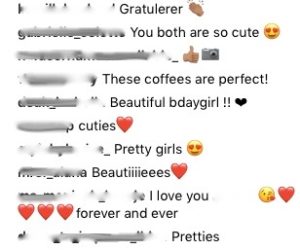
Which of them do you think has the biggest impact?
The huge importance of engagement is also the main reason why many brands have gone to so-called micro-influencers.
Micro-influencers are influencers that have a smaller following than 50K.
Related: Micro-influencer marketing: A Complete Guide
Micro-influencers normally have a highly targeted follower base while at the same time having an extremely high engagement compared to a lot of larger influencers.
Micro-influencers are also normally a lot cheaper, and some satisfy with only receiving a product, and brands have realized this, choosing to work with several micro-influencers instead of spending all their money on a single large influencer.
This also means that they’re spreading out the risk if one influencer might not be able to generate the results they were hoping for.
How do you actually find influencers?
Finally, we come to the challenging part that we discussed earlier.
There are several ways to find influencers, but thankfully, the process of finding influencers has become a lot easier as the popularity of influencer marketing has increased.
I’m of course talking about influencer directories, networks, and databases that have gathered influencers in one place.
But first, the more time, and effort-consuming methods, if you would prefer those:
Social media
Because social media is the place where the influencers are more active, it is also the most logical place to look for them. Here are the best ways to find influencers on social media:
1. Hashtags
Hashtags exist on most social media platforms, and with the help of them, you can find influencers. On Instagram for example, there is something called “top posts” which is the posts at the top of each hashtag.
These posts are the posts that have been posted with a particular hashtag and gotten the highest engagement among all posts made together with the hashtag you search for. Logically influencers are likely to end up on top posts because they have large followings. If you’re searching for women’s fashion influencers, searching for the hashtag “fashion” or “womensfashion” is a good way to start.
2. Google
On Google, you can find just about anything – including influencers.
Search for your niche/keyword together with “influencers” and you’ll get some results you can go through.
For example “Fashion influencers” or “Beauty influencers”. You can also search for other keywords related to influencer marketing, together with your niche, and you will be able to find influencers that may be suitable for your brand.
3. Magazines
Various magazines interview and write about social media influencers every now and then. Read magazines relevant to your niche and you might find influencers that you could work with.
4. Directories
This is the easiest and less time-consuming way for you to find influencers.
Directories are also more likely to give you a higher ROI in the end, simply because the influencer you work with is laser-targeted to your niche. Influencer directories are databases or search engines that help you more easily find the influencers you need. Many of them offer the ability to filter influencers based on relevant criteria, which saves you a ton of time as you don’t have to try to filter and find them yourself.
Other directories/influencer companies also offer the service of going out and finding targeted influencers for you. This may be a good idea if you’re strapped on time, or are not exactly sure how to go about finding the best match for your campaign.
4. Structure of the campaign
Now that you have found an influencer and started talking, you need to agree on the structure of the campaign with the influencer.
Do you want to arrange a giveaway with them?
Do you want them to take photos of them using your products?
Do you want them to make a video when they are using your products?
Let the influencer know what you want, and be clear with how you want the structure of the campaign to look like.
Bad communication with the influencer is something you want to avoid at all costs, as this can result in a campaign that ends in something that is far from your initial idea.
5. Confirm the post
Before the influencer makes the marketing post, ask them to send it to you for review.
This is to ensure that the post aligns with your brand’s core values and what you stand for.
Also, of course, to make sure that you are satisfied with everything.
If you want to make changes, let the influencer know what you didn’t like, but do not start writing/editing yourself, as it is equally important that the post aligns with the influencer’s values and what their followers expect from them. If you try to decide too much of the content and message, there’s a risk that it will come across as inauthentic, damage the credibility of the campaign, and ultimately, result in poor results.
6. Analyzing results
Hopefully, you’ve now run a successful marketing campaign.
That means that it is time to evaluate the generated results.
However. And this is a big “however”.
“Firms still find it difficult to determine the Return on Investment on an Influencer Marketing Campaign” (source)
Measuring the ROI of an influencer marketing campaign is difficult, but it can be done.
How do you measure brand awareness?
The results of an influencer marketing campaign can be generated weeks or even months after a marketing post has been made.
Study the results of the post
The first and most logical way to measure the ROI of your campaign is to take a look at the results the post drove.
Look at likes, comments, and shares, and don’t forget to study the comments more carefully to see if the post made any real impact.
Maybe you’ll see a comment which says “I’m buying that”.
If your goal with the campaign was to increase your followers, you can take a look at your own follower count and see if you notice an increase.
Even if your goal wasn’t to gain followers, you might have gotten some new potential customers following your page.
The way you measure your results depends on the objectives that you had at the beginning of your campaign.
If your goal was to increase newsletter sign-ups, you will have an easier time measuring the ROI, simply because the numbers will be very clear.
But then again, when it comes to brand awareness, measuring that is extremely difficult.
Thankfully though, you don’t need to be too worried about losing money on influencer marketing because a study made by Thomoson businesses are making $6.50 for every $1 spent on influencer marketing.
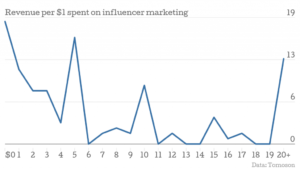
Here are some of the most effective ways to measure ROI:
- Increased revenue
- Promo Codes
- Google Analytics
- Isolated marketing
To read a full-on guide on how to measure ROI influencer marketing, read:
Related: How To Measure ROI of Influencer Marketing
Final thoughts
As I mentioned at the beginning of this article, influencer marketing is an art, but once you master it, it is extremely fruitful.
The most important part is identifying and partnering with influencers who are in the same niche as you and aligns with your core values.
Don’t ignore micro-influencers as these can be extremely effective for your brand, and most importantly – don’t believe that the larger the following, the better.
Instead, focus on engagement and the impact the influencers have on their audience.


